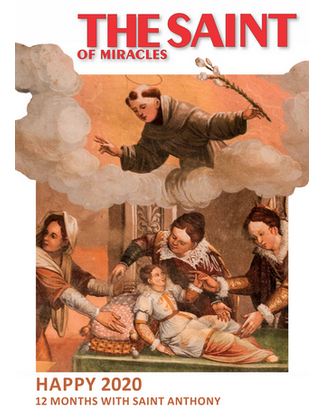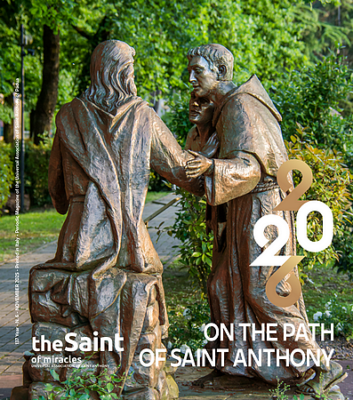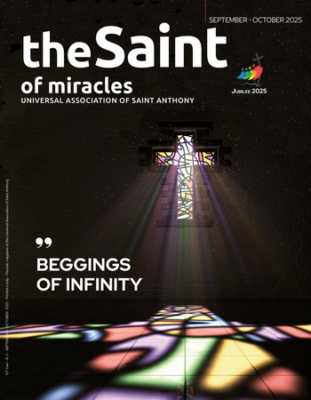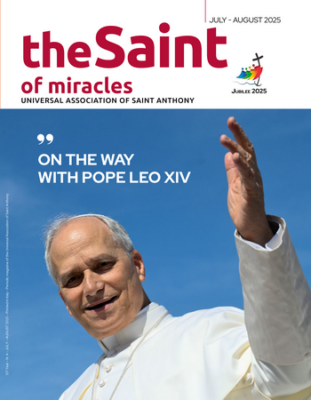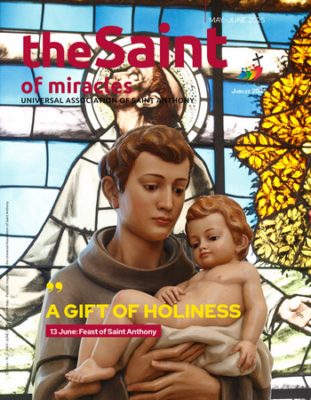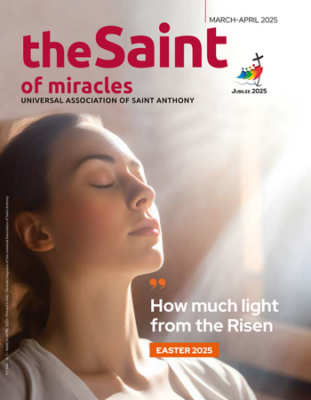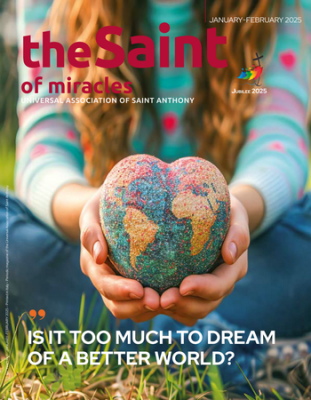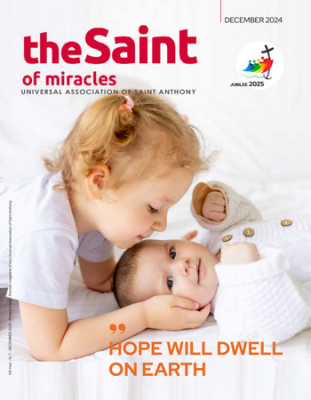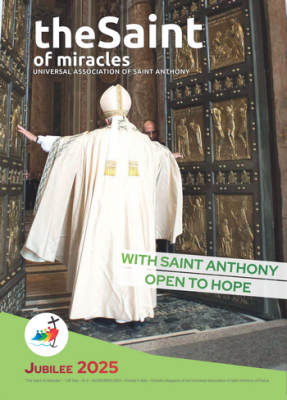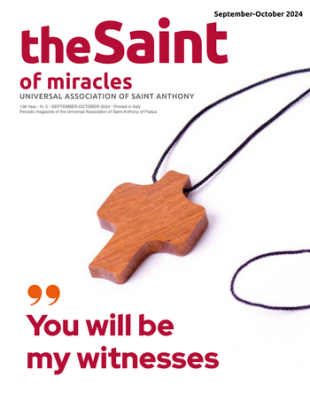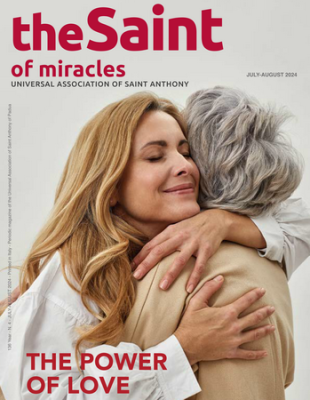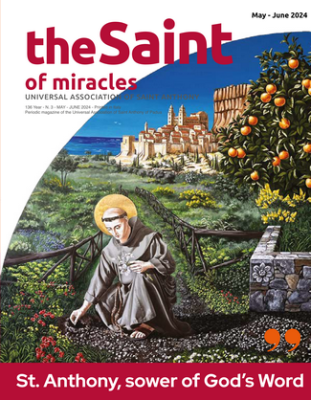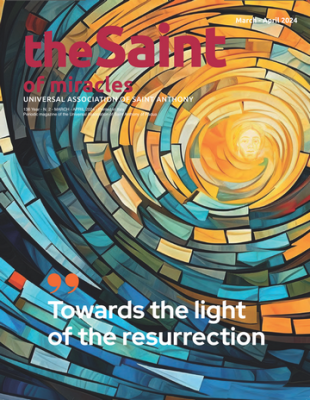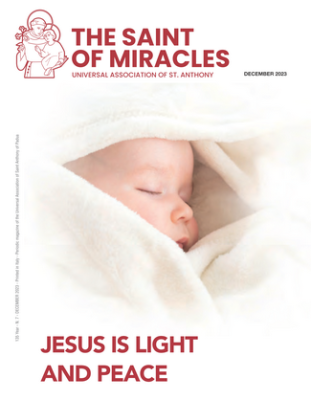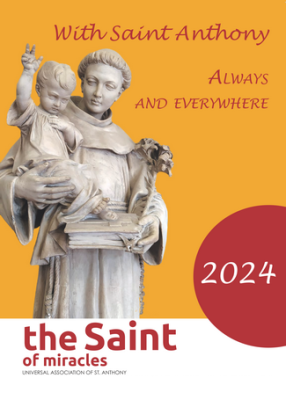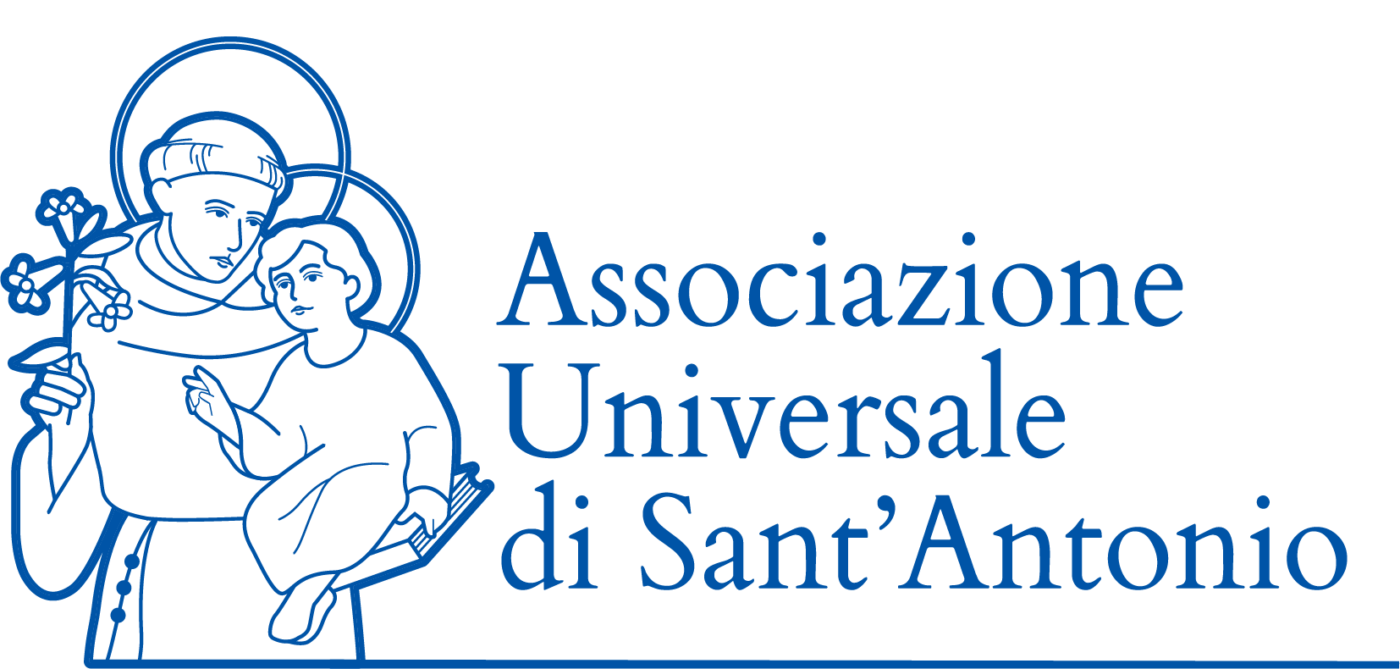Year 131 - November 2019Find out more
The life of St. Anthony shown in the frescoes in Tito (Potenza)
Mariangela Salvia
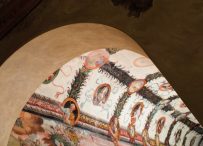
In the north-east of Tito (a small town in the province of Potenza, about 15 km from the regional capital), on one of the three promontories around which the original urban settlement took shape, stands the convent complex of St. Anthony of Padua, one of the main Franciscan settlements in Basilicata.
It was built on the initiative of a group of Franciscan fathers from the town, within the movement of the Regular Observance to which they belonged—which at that time was a promoter of cultural and artistic development and of an intense building activity in the region. Having obtained the consent of Pope Leo X, in 1514 they started the construction of the convent with the help of the Universitates (the ancient municipalities) of Tito and of the nearby town of Pietrafesa (now called Satriano), and of the local population—which highlights the strong roots in the territory of the Franciscans.
The events of the complex of Tito were parallel to the parable of the movement: a great importance in the first centuries of its diffusion and a progressive decadence, during the French military occupation of the Kingdom of Naples and after the terrible earthquake of 1857, until the suppression wanted by the liberal government of the young Kingdom of Italy, in 1866. Even after the suppression, however, it continued, in various forms, to play a role of cultural and spiritual reference for Tito’s community.
The convent complex has the typical layout of Franciscan convents: a rectangular building with a church located on the north-west side, adjacent to a convent organized around a cloister, protected from the cold winds by the church. Around the cloister—once the regulatory center of the rhythm of the entire complex—there are the paths that led to the various areas of activity, around which the distribution of spaces was divided.
After its suppression, it underwent numerous interventions of ordinary and extraordinary maintenance, as well as a long series of remodeling and changes in the use of the premises. The last massive restoration campaign, which ended in 2011, was guided by the intention to return to the complex its original structure, reconstructed on the basis of archival sources.
The Convent of St. Anthony is a treasure chest of a rich artistic heritage consisting of imposing late Baroque altar machines, a fine eighteenth-century choir, countless sacred furnishings, richly decorated, precious statues and paintings, two of which are the Madonna and Child (Giovanni da Nola, 1920s, 1500) in gilded and painted carved wood, and the Coronation of the Virgin Mary (Giovanni de Gregorio, known as Il Pietrafesa, 1629), as well as precious fresco decorations, on the right wall of the main nave of the church, but above all in the convent.
Its cloister, in fact, preserves one of the most interesting fresco cycles in the region, which were painted in several decorative campaigns, thanks to a religious and secular patronage, as evidenced by the numerous inscriptions and coats of arms in the decorative layout.
In the light of the results of the precise restoration work, it was possible to place the original decorative campaign in the panorama of Lucanian mural painting between the second half of the 16th century and the first decades of the following century, and to approach the valuable work to the workshop of Giovanni and especially Girolamo Todisco, as well as Il Pietrafesa. This original production must be combined with the twentieth-century intervention of Giuseppe Fatiguso, a painter and draughtsman from Cassano delle Murge who signed several scenes.
In fact, in the 1920s he was commissioned, on the occasion of the opening of the “Principe Umberto” kindergarten, to carry out a massive restoration of the frescoes, which were then in very poor condition, as well as to complete the missing parts of the decorations. The entire pictorial cycle unfolds along the four perimeter corridors of the cloister, on the walls and on the vaults. The iconographic language is simple and immediate, and is expressed through the narrative, the celebration, the cult.
The narrative is expressed through the 27 scenes taken from the life and miraculous interventions of saint Anthony; the celebration, in the exaltation of the Order itself, in the portraits of Saints and Blessed, distinguished friars, biblical figures, depicted in countless medallions and scrolls; the cult, in the representation of sacred images.
This rich repertoire is united by the same “ornamental architecture”: a festoon or central ribbon runs along each corridor along its entire length, and from this one side branches depart, marking the vault in rather regular squares, enriched by naturalistic representations and allegorical figures; the walls towards the inner courtyard host figures of prophets and doctors of the church in round and niches perspective; the opposite walls house the frames of the scenes (marked by suggestive columns that are different from each other) on which rests a trabeation decorated with inscriptions, coats of arms and rounds. The east corridor, which preserves the oldest decorative pieces, differs from this common—although varied—setting. The lush naturalistic decoration of the vault houses, alongside more fantastic elements, references to the Franciscan tradition.
The inestimable value of the cultural heritage preserved in this convent complex—the architecture and the very valuable artistic productions made over the centuries—deserves to be known and appreciated. From this awareness, the project “SEQUERI” was born: the idea has been developed from a scientific research I conducted—from which are taken the images that accompany the months of this year.
Through the use of contemporary tools of fruition, we intend to return to the local and global community to document the history, architecture and the decoration of the convent, with the aim of reconnecting the current identity with the historical memory and “re-knowledge” of the cultural heritage, that is to know it in a new way, deeper and more useful to identify with the place.
“Sequeri” was presented to public, in demo form, on 5 May 2018 at the Cloister of the Convent. It is still possible to access online part of the content presented and be updated on developments by visiting the site www.conventotito.it.


 Italiano
Italiano Français
Français